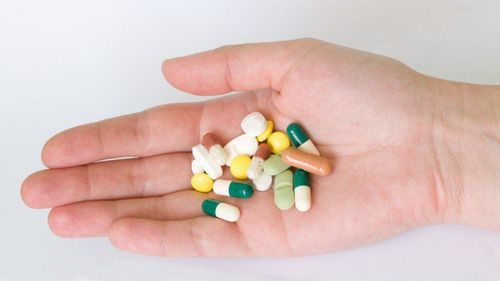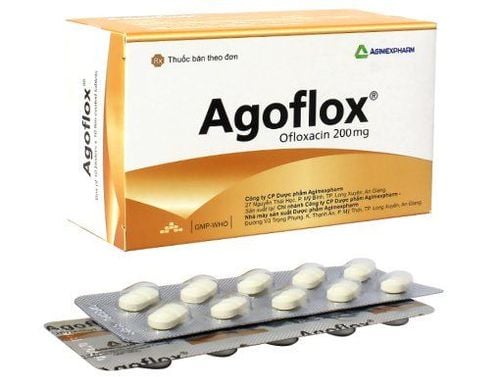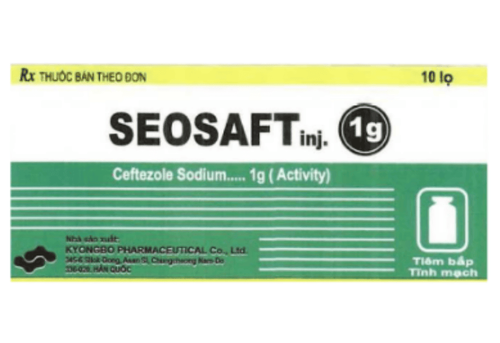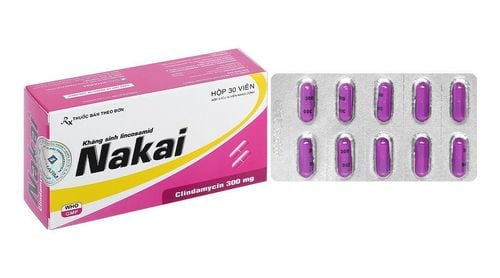This is an automatically translated article.
Getzacin is a quinolone antibiotic. Possessing a broad antibacterial spectrum, Getzacin is effective in the treatment of many infections: respiratory infections, genital - urinary infections, infections of the digestive system, bones, joints, skin and soft tissues,...
1. What does Getzacin do?
With the main ingredient is Ofloxacine (contents of 200mg, 400mg), Getzacin is a Quinolone antibiotic with broad antibacterial spectrum including: Enterobacteriaceae, Pseudomonas aeruginosa, Neisseria spp., Haemophilus influenzae, Staphylococcus, Streptococcus pneumoniae and some bacteria grams (+) other.
Indications of the drug Getzacin:
Respiratory infections: Pneumonia, severe bacterial bronchitis, lung abscess, bronchiectasis, sinusitis, otitis media, tonsillitis; Chlamydia infection in the cervix, urethra (with or without gonorrhea); Uncomplicated gonorrhea; Inflammation of the prostate, bladder, epididymis; Urinary tract infection, pyelonephritis; Skin and soft tissue infections; Bone and joint infections; Infections of the digestive system, biliary tract, colitis; Septicemia; Surgical infection.
2. Instructions on how to take Getzacin
Getzacin drug is prepared in the form of oral tablets, solution for infusion and eye drops. Users need to take the drug as directed by a specialist. Suggestions for use and dosage below are for reference only:
Dosage:
Treatment of pneumonia, bronchitis: Oral 400mg/ every 12 hours, treatment for 10 days; Treatment of Chlamydia infection: Oral 300mg/ every 12 hours, treatment for 7 days; Treatment of prostatitis: Oral 300mg/ every 12 hours, treatment for 6 weeks; Treatment of gonorrhea, uncomplicated gonorrhea: Single oral dose of 400mg; Treatment of cystitis caused by E.Coli or K.pneumoniae: Oral 200mg/ every 12 hours, treatment for 3 days; Treatment of cystitis caused by other bacteria: Oral 200mg / every 12 hours, treatment for 1 week; Treatment of skin and soft tissue infections: Oral 400mg/ every 12 hours, treatment for 10 days. Usage:
Tablet form: Drink with plenty of water, do not drink during meals; Injection form: Slow IV infusion over 60 minutes; Eye drops form: Dosage depends on the severity of the eye infection and should be directed by an ophthalmologist. Note:
Adjust the dose of Getzacin for patients with impaired renal function (Specifically for patients with a clearance of 10 - 50ml/min, keep the same dose but take it every 24 hours). For patients with cirrhosis, do not use Getzacin in excess of 400mg/day; Discontinue use if signs of allergy, hypersensitivity or symptoms of tendinitis occur.
3. Getzacin . side effects
During treatment with Getzacin, users may experience some side effects such as:
Nausea, vomiting; Headache, insomnia; Dizzy; Diarrhea; Red, itchy rash; Vaginitis ; Painful swelling at the injection site (if using the solution for injection); Joint pain, muscle pain; Tendonitis ; If experiencing serious or unusual side effects, the patient should proactively notify a specialist doctor for accurate and timely handling instructions.
4. Notes when using Getzacin
Getzacin is contraindicated in the following subjects:
Patients with a history of hypersensitivity to the components of the drug (especially Ofloxacine); People with a history of hypersensitivity to Quinolone antibiotics; People with a history of easy convulsions, epilepsy, kidney dysfunction, cerebral arteriosclerosis; People with a deficiency of the enzyme Glucose-6-phosphate dehydrogenase; Children under 18 years old (children of puberty); Pregnant and lactating women. Getzacin should be used with caution in the following cases:
Patients with renal failure; Elderly (dose reduction should be considered); Patients with liver failure; Other notes:
If you get dizzy while taking Getzacin, you should not operate machinery, drive or do complicated jobs. Stop taking the drug as soon as any signs of an allergic reaction appear; Avoid exposure to sunlight and UV rays during treatment.
5. Getzacin drug interactions
If Getzacin is used at the same time with some drugs, there may be an interaction reaction, typically:
Ofloxacin component in Getzacin can increase the concentration of Theophylline in serum by about 10%. Increase the concentration of Cyclosporin, Warfarin and increase the anticoagulant effect; Taking Getzacin with non-steroidal anti-inflammatory drugs may increase excitability on the central nervous system; For patients who are taking blood sugar medication, it is necessary to strengthen blood glucose monitoring. Mineral salts, vitamins (such as calcium, aluminum, magnesium, sucralfate) can reduce the absorption of ofloxacin, so Getzacin should be taken 2 hours before or after taking these drugs.













